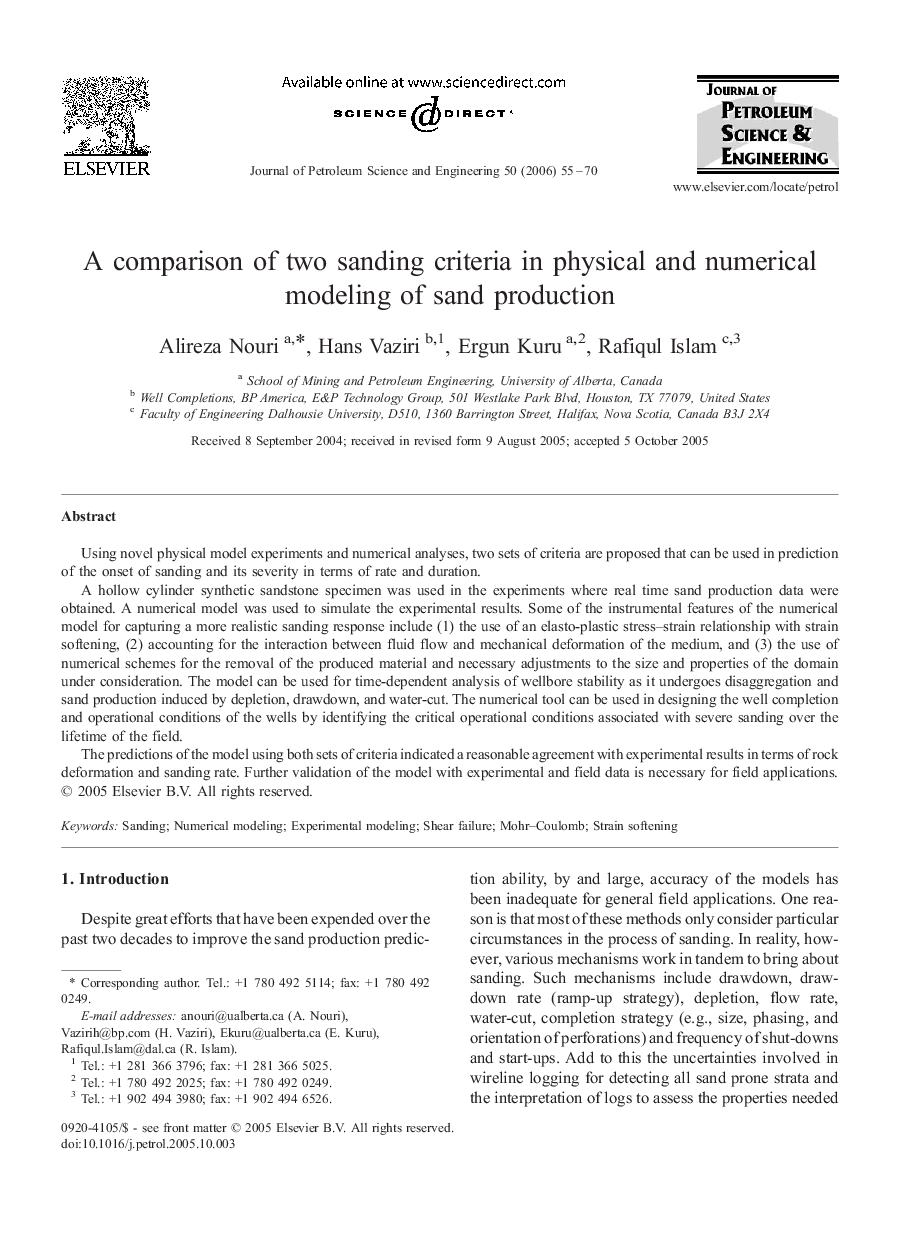| Article ID | Journal | Published Year | Pages | File Type |
|---|---|---|---|---|
| 1756619 | Journal of Petroleum Science and Engineering | 2006 | 16 Pages |
Using novel physical model experiments and numerical analyses, two sets of criteria are proposed that can be used in prediction of the onset of sanding and its severity in terms of rate and duration.A hollow cylinder synthetic sandstone specimen was used in the experiments where real time sand production data were obtained. A numerical model was used to simulate the experimental results. Some of the instrumental features of the numerical model for capturing a more realistic sanding response include (1) the use of an elasto-plastic stress–strain relationship with strain softening, (2) accounting for the interaction between fluid flow and mechanical deformation of the medium, and (3) the use of numerical schemes for the removal of the produced material and necessary adjustments to the size and properties of the domain under consideration. The model can be used for time-dependent analysis of wellbore stability as it undergoes disaggregation and sand production induced by depletion, drawdown, and water-cut. The numerical tool can be used in designing the well completion and operational conditions of the wells by identifying the critical operational conditions associated with severe sanding over the lifetime of the field.The predictions of the model using both sets of criteria indicated a reasonable agreement with experimental results in terms of rock deformation and sanding rate. Further validation of the model with experimental and field data is necessary for field applications.
